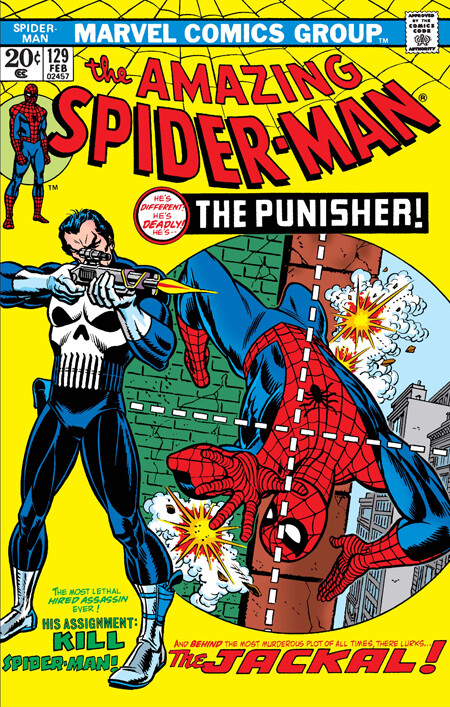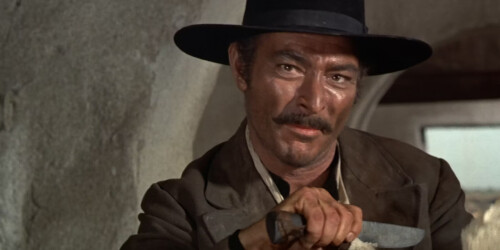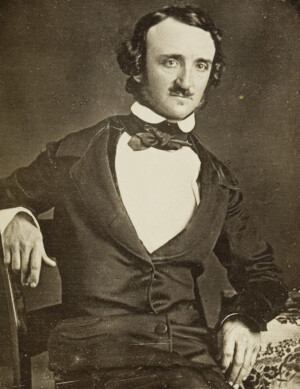5 Iconic Characters That Are Secretly Ripping Off Others

Coming up with a genuinely original character is a nigh-impossible task. According to our math, there hasn’t been a new idea since the 1960s. If you need proof, just turn on your televisual streaming device and look at all the remakes and reboots and comic book franchises and regular books being turned into live-action whatevers. Everybody’s somebody who already existed in some other form.
But, hey, it’s not all bad news: a lot of your favorite pop culture characters were actually other characters first, too. Creators have been ripping each other off for literal centuries at this point ...
Batman’s Even Less Original Than You Thought (Which Is Saying Something)
Don't Miss
Batman’s pulp influences are, by now, pretty obvious to anyone who’s been paying attention. He’s equal parts Zorro, the Shadow, and the Scarlet Pimpernel, while his rogues gallery is cribbed pretty blatantly from Dick Tracy. Even Batman’s cape borrows inspiration from Leonardo DaVinci (depending on how much you trust Bob Kane, anyway). But, hey, at least the whole “bat” angle is original, right?

We hate to break it to you, but a rich guy dressed up like a bat and getting obscene amounts of revenge is pretty much the entire thrust of the 1874 operetta Die Fledermaus. The whole play is, well, it’s a lot to get into, with numerous deceptions, domino masks, and faked identities, but here’s the summary:
Years ago, an aristocrat named Falke went to a masquerade ball with his buddy Eisenstein and got stupid hammered. Falke, dressed up like a bat, and Eisenstein, a butterfly, stumbled drunkenly through the streets of Vienna until Falke passed out on a bench. As a joke, Eisenstein left him there to get found by the cops, and Falke’s been derisively referred to as “Dr. Bat” by the whole of the city from then on.
Now, at another party, Falke’s overly complicated plan of vengeance – literally called “The Revenge of the Bat” – kicks off. Through a lot of lying and people pretending to be other people, he’s going to ruin Eisenstein’s marriage. Things don’t go exactly as he wants, mostly on account of Eisenstein and his wife not being as preposterously petty as he is, but, hey, you live and you learn.
Anyway, Falke wasn’t a one-off in the masquerade department; bat costumes were apparently all the rage in the Victorian era. Here’s what they looked like:

La Mode Illustree, 1887, Public Domain
The Tick cartoon made this connection even more explicit, straight-up naming their Batman parody Die Fledermaus and mimicking the 1800s look of putting an actual bat face over your own. Years later, when DC’s O.G. Batman was hurled back through time for Comic Book Reasons™, his caveman garb seemed to pay homage to the animated D.F., thereby completing the circle.

Sunbow Entertainment/20th Television

DC
Meanwhile, performances of Die Fledermaus have started sprinkling in references to Batman, too. It’s like an ouroboros of homages and parodies and stolen ideas, based entirely on someone’s great-grandma’s Halloween costume.
The Punisher Stole His Whole Deal from the Executioner Novels
When the Punisher first showed up in The Amazing Spider-Man #129, the violent antihero thing was a bit of a revelation – to comic books, anyway. Fans of Don Pendleton’s wildly popular The Executioner novels probably weren’t that impressed.

First published in 1969, The Executioner books followed Mack Bolan, a Vietnam War sniper who goes to war against the Mafia after they cause his family’s violent deaths. For 38 novels, Bolan murders his way through the Mafia before being granted amnesty by the government, taking on the name Colonel John Phoenix, and turning his murderous talents toward Russians and/or terrorists, as the changing times demanded.
The similarities don’t stop there, either: Bolan also kept a “war journal” and had an RV he called the “Warwagon.”

Don Pendleton

Don Pendleton
What’s truly shocking is that, from the start, nobody was even trying to pretend that Frank Castle wasn’t a rip-off. Punisher's co-creator Gerry Conway has been very open about his influences (though he does argue that by making Frank a villain and focusing on the questionable morals of vigilantism, he was putting some distance between the two characters). Meanwhile, Executioner creator Pendleton was straight-up interviewed by Marvel in Marvel Preview #2, the Punisher’s first solo outing.
And it’s not like casual readers wouldn’t have noticed, either: the Executioner books were kind of huge at the time. The franchise ran for 50 years, over 464 novels, with the last book being published in 2020. There were six different spin-off series. The New York Times even credits Pendleton with creating an entire genre of paperbacks and inspiring every “angry guy with trauma and a gun,” from Death Wish’s Paul Kersey to Rambo to John Wick to Waluigi in our spin-off game that Nintendo is too cowardly to make.
While Pendleton has publicly said that the Punisher “took a lot of liberties” with his work, he never sued Marvel or anything. Which, honestly, is pretty nice of the guy who basically created hyperviolent revenge fantasies.
Cad Bane Owes Lee Van Cleef’s Angel Eyes Some Royalties
Look, it’s not news that George Lucas drew from a lot of sources when he was first writing Star Wars. And while there are countless angry message boards and Reddits debating how much was influence and how much was imitation, there’s no denying that The Clone Wars’ Cad Bane …
… is a carbon copy of Lee Van Cleef’s iconic Angel Eyes from The Good, the Bad, and the Ugly.

United Artists
Both Mr. Eyes and Mr. Bane are cold, money-driven, and ruthless to a fault, with the former being the “bad” of his movie’s title, while the latter was violent enough in a children’s cartoon to get the attention of standards and practices. Western imagery and musical cues follow Star Wars’ bounty hunter around, and, as a bonus, he even dies in a standoff like his mercenary predecessor.

Disney/Lucasfilm
And much like Gerry Conway before him, George Lucas wasn’t shy about admitting to his blatant thievery. When Clone Wars’ supervising director Dave Filoni needed a new bounty hunter for the show, Lucas got very hands-on, telling him straight-up to reference Van Cleef's spaghetti Western killer. And based on concept art from the original trilogy that Filoni found, it wasn’t the first time Lucas had the idea, either.
But then, given how much of Star Wars iconography is lifted outright from Westerns, “first ideas” aren’t really Georgie Boy’s forte.
Sherlock Holmes Wasn’t the First Superlogical Detective
Everyone knows Sherlock Holmes, even if most folks haven’t actually read the stories. His iconography is iconic: the hat, the pipe, the deduction, the being a dick to everyone. There are roughly 800 adaptations of the character going on at any given moment, making Holmes second only to Dracula in media portrayals. Hell, “No sh!t, Sherlock” is one of the first insults we learn as kids.

BBC
That’s how deeply entrenched the detective is in modern culture.
Pretty impressive for a cheap knock-off.
Much like evil clowns, the credit for creating the archetypal detective story actually goes to Edgar Allan Poe. First appearing in “The Murders in the Rue Morgue,” Poe’s C. Auguste Dupin was a detective before the word detective even existed. Literally. The first police units focused on investigating crimes were only started in 1842, with Charles Dickens first coining the word “detective” in 1852’s Bleak House. “Murders in the Rue Morgue” was published in 1841.

The Poe Museum, Public Domain
All the Holmes-ian tropes were there, too. Dupin was possessed of a “peculiar analytic ability,” an “excited” intelligence, and a “frigid and abstract” manner. He helped utterly outclassed police solve impossible crimes by using the magic of logic and deduction. He did that thing where he sums it all up at the end, going point by point and explaining why everyone else is so stupid. Dupin even smoked the same kind of pipe as Holmes, and all of his stories were also narrated by his overly admiring roommate.
When Arthur Conan Doyle finally got around to writing the first Sherlock Holmes story, “A Study in Scarlet,” in 1887, he was so late to the game that there wasn’t actually much for him to do. In fact, when Holmes “reads” Watson’s thoughts using all that elementary evidence he’s so fond of, Watson straight-up calls him out for doing the same thing Poe’s Dupin did fifty years earlier. Holmes, naturally, gets all haughty and calls Dupin (and Poe) a hack.
In the real world, however, Doyle 100% knew how indebted he was to Poe, basically consigning himself to a life of unoriginality. In an interview, he said, point blank: “Edgar Allan Poe ... was the father of the detective tale, and covered its limits so completely that I fail to see how his followers can find any fresh ground.”

The Poe Museum, Public Domain
Poison Ivy Was (Basically) Created by Nathaniel Hawthorne
In the annals of comic- and pop culture-dom, Poison Ivy remains one of a kind. While there are certainly other plant-based superpeople – Swamp Thing, Man-Thing, Groot – they almost always take the form of “a sentient mass of monstrous vegetation.” For some reason, no one’s ever tried to copy the whole “lady made of poison who really likes flowers” angle. Well, no one except Poison Ivy herself.
The world’s first floral femme fatale debuted in “Rappaccini’s Daughter,” a short story by Nathaniel Hawthorne published in 1844. Beatrice, the only daughter of a Victorian mad scientist, is a young woman as “terrible” as she is beautiful. Her father raised her in a garden of poisonous plants, alive with “malignant influences,” until she, too, became a being of pure poison. She can kill with a touch or even the faintest breath.
Rather than let it get her down, Beatrice runs around tending to all her “sister” plants in the garden, wearing dresses of bright colors that give off Big Plant Energy while also glowing in the dark. Along the way, she learns enough botany “to fill a professor's chair,” but plays dumb because, believe it or not, the patriarchy was even worse 200 years ago.
In the end, she falls in love with some dude named Giovanni and dies for it because Hawthorne is nothing if not a bummer. Giovanni, for his part, isn’t entirely sure if he actually loves Beatrice or if he was maybe brainwashed into it by her flower powers. And all the while, Doctor Rappaccini is crowing about how he literally created her to be a supervillain.
“Dost thou deem it misery,” he yells at his dying daughter, “to be endowed with marvelous gifts against which no power nor strength could avail an enemy — misery, to be able to quell the mightiest with a breath?”

DC/Warner Bros.
Ivy’s earliest incarnation, back when she was Dr. Lillian Rose, mostly just followed the broad strokes of the story, in that Poison Ivy was a hot and deadly lady who liked plants a little too much. But Neil Gaiman’s retconning of her origins following “Crisis on Infinite Earths” took Ivy back to her roots, pun very much intended.
Renamed Pamela Isley, she was a promising doctoral student who fell in with an obsessive mad scientist and was subjected to numerous experiments, gaining her poisonous plant powers. She developed a deeper affinity for vegetable life than meatbagkind, while simultaneously and ironically becoming a much more sympathetic character in the process.

DC/Warner Bros.
Of course, that was eventually retconned into Ivy’s being part of some cosmic plant consciousness called the Green, run by the Parliament of Trees, which was not in the Hawthorne story but was basically in The Lord of the Rings, where it was called an Entmoot, because, again, there’s no such thing as a new idea.
Eirik Gumeny (@egumeny) is the author of the Exponential Apocalypse series, a five-book saga of slacker superheroes, fart jokes, and assorted B-movie monsters. His atompunk western, Beggars Would Ride, is due out this fall.
Thumbnail: Warner Bros., Marvel Studios